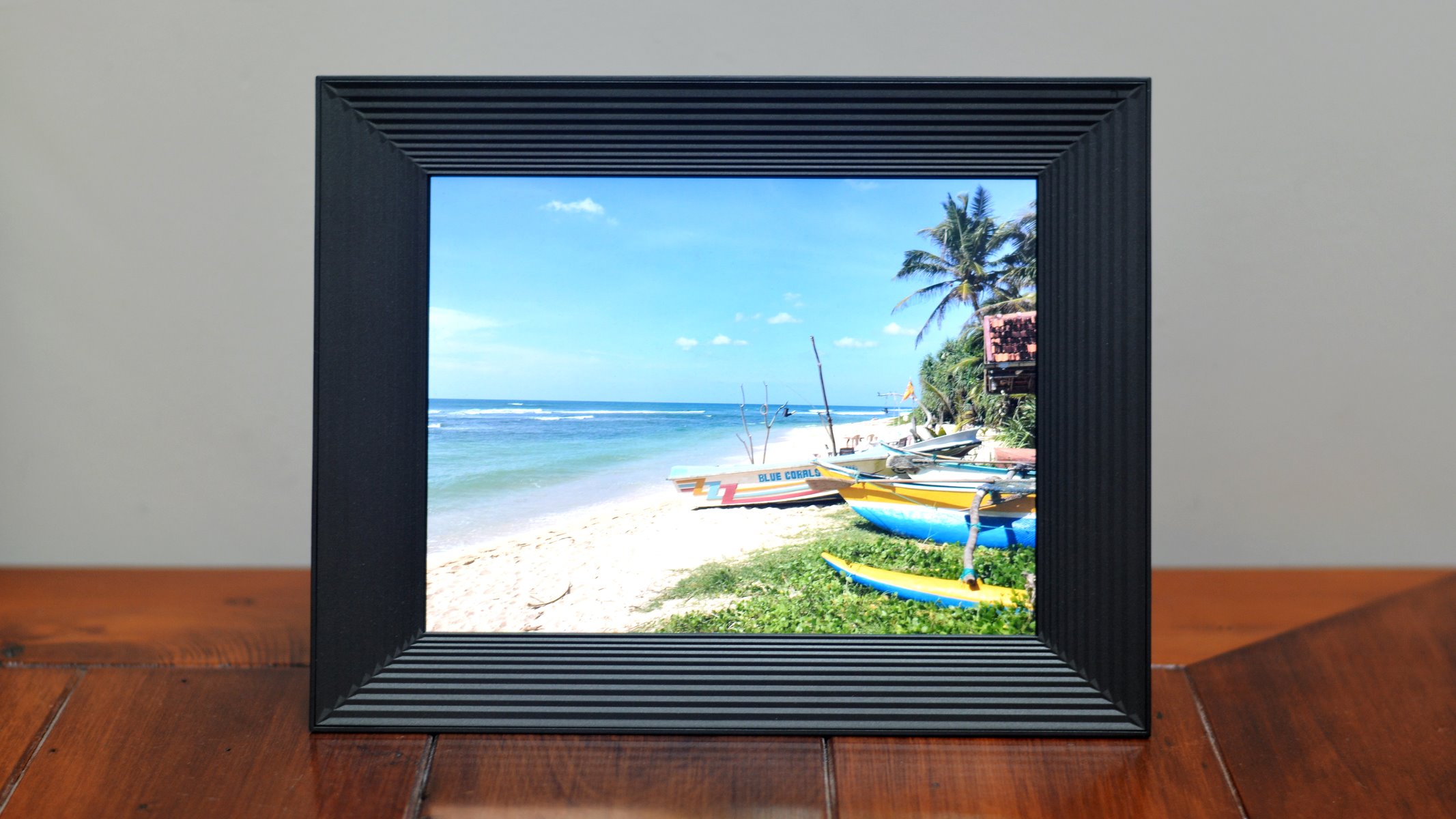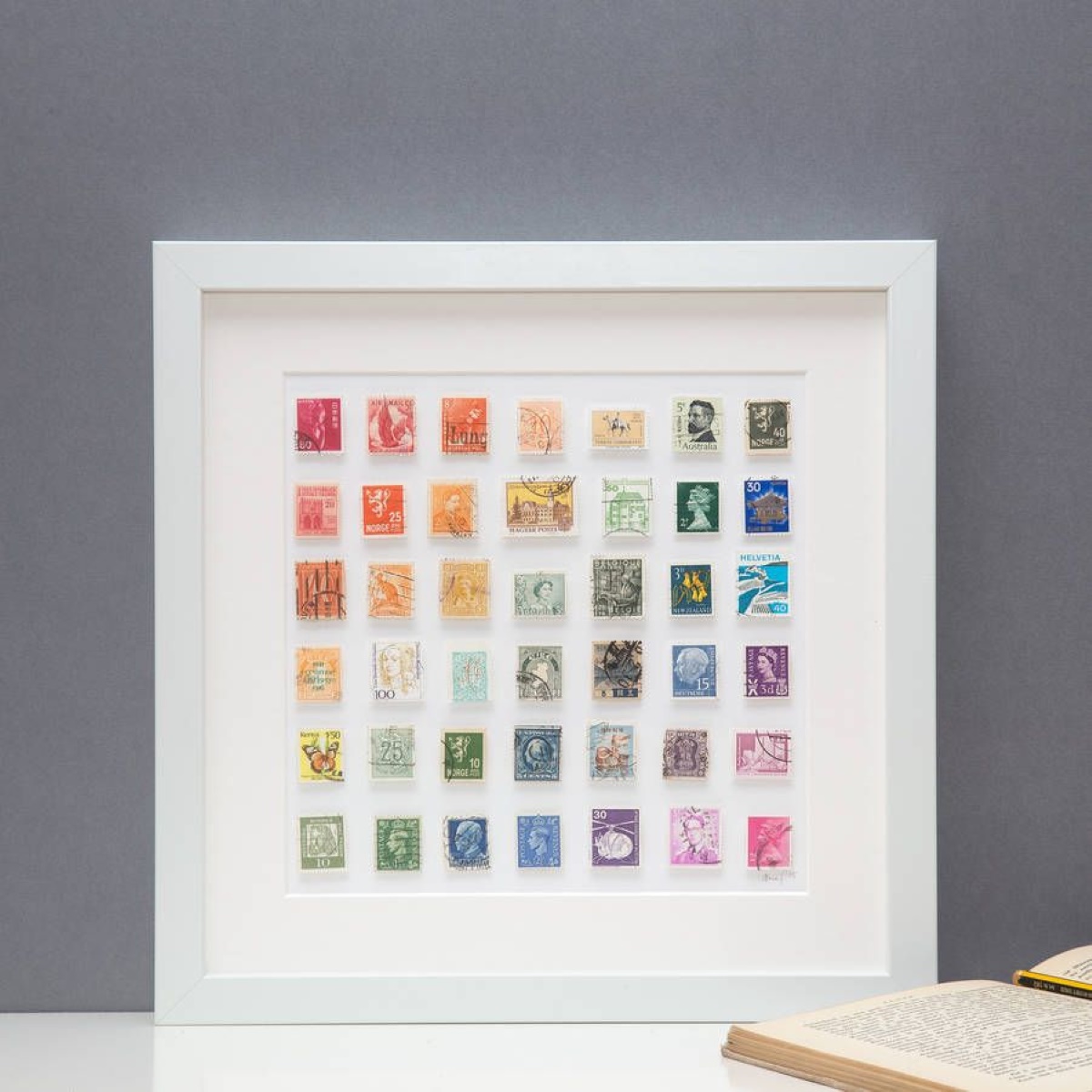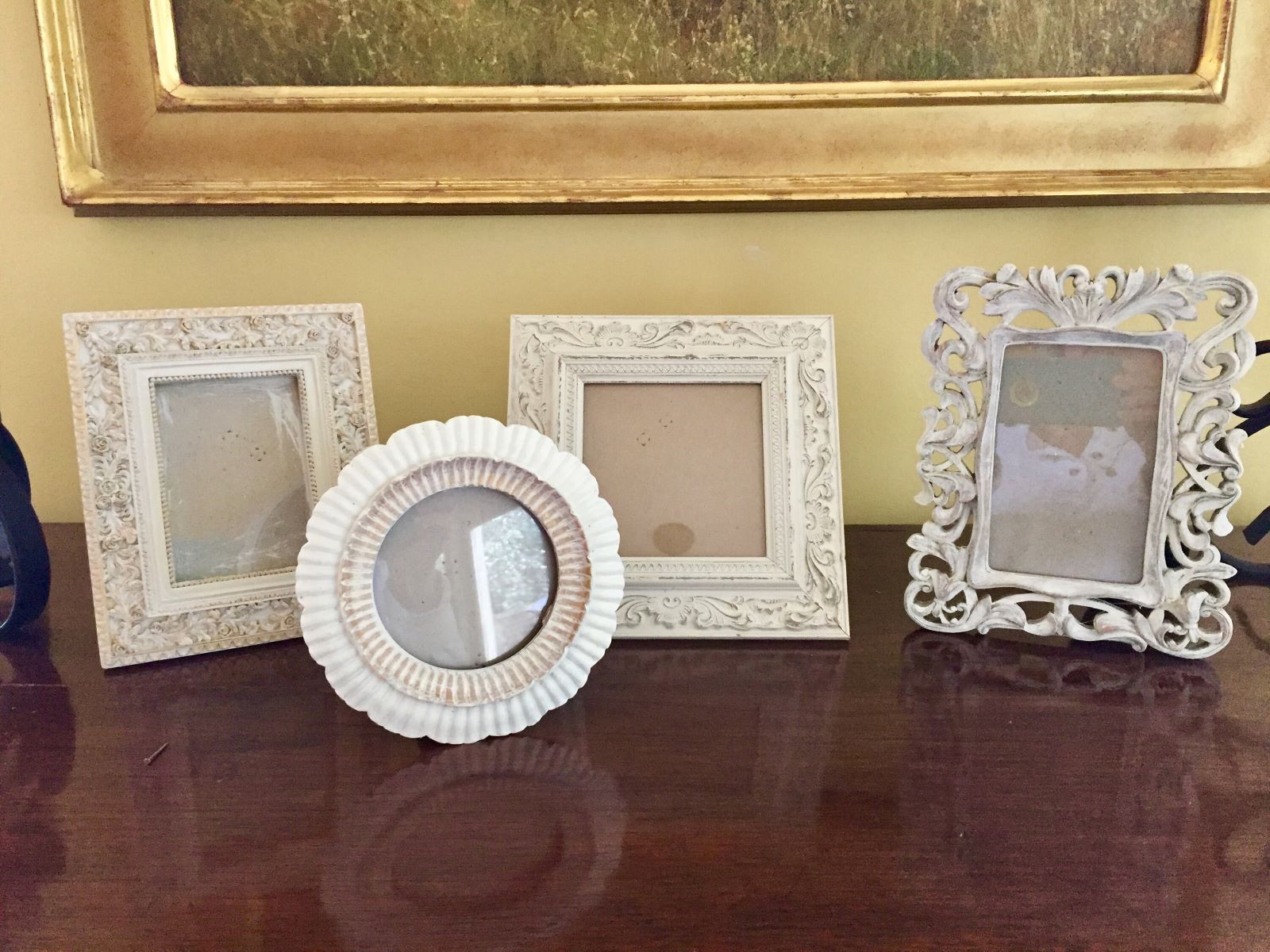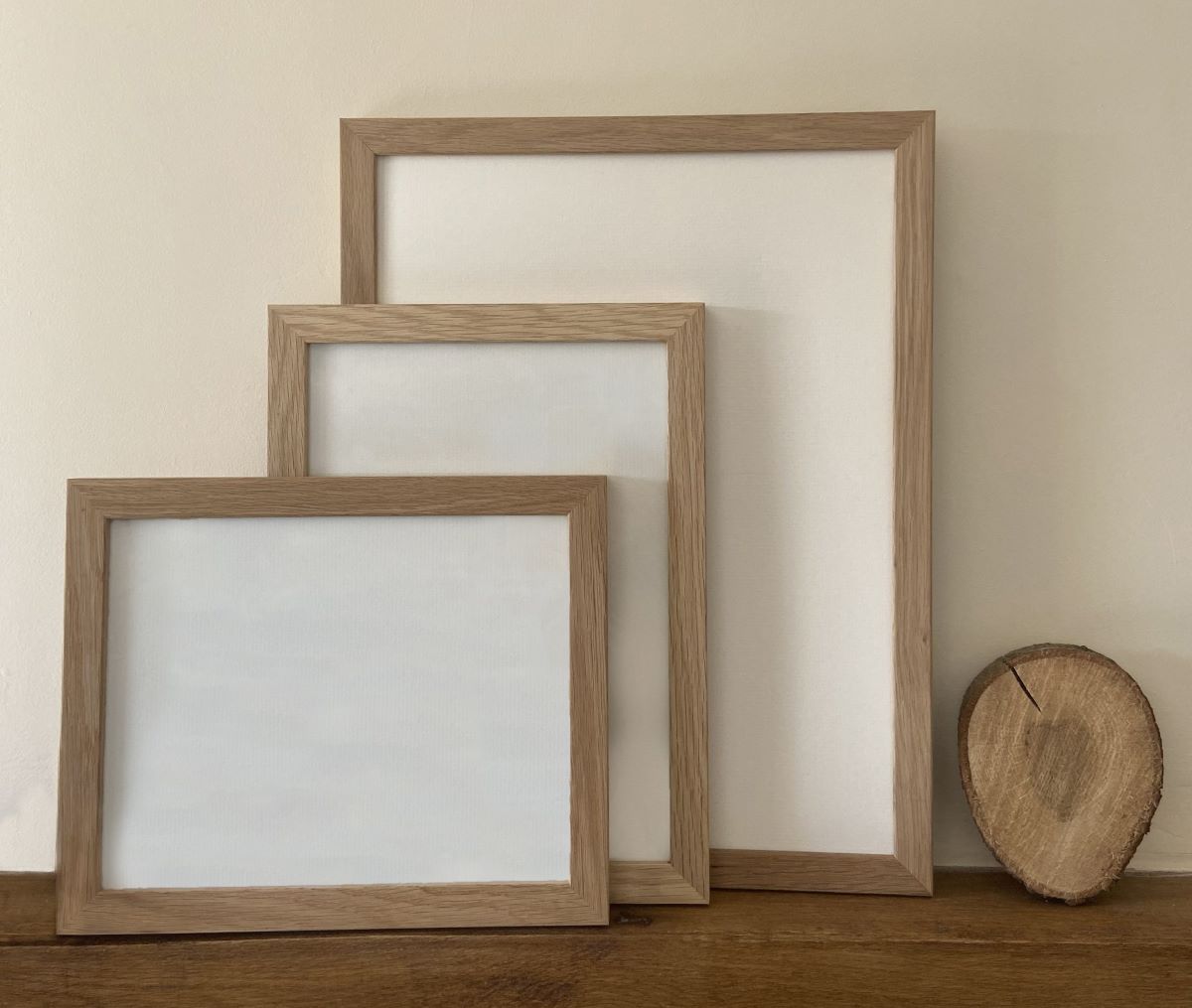

Articles
What Is HD Glass In Picture Frames
Modified: October 21, 2024
Discover the benefits of HD glass in picture frames with our informative articles. Learn how HD glass enhances the clarity and vibrancy of your framed artwork.
(Many of the links in this article redirect to a specific reviewed product. Your purchase of these products through affiliate links helps to generate commission for Storables.com, at no extra cost. Learn more)
Introduction
In the world of picture frames, there is a growing demand for high-quality glass that can enhance the visual appeal of artwork and photographs. One such innovative solution is HD glass, which has gained popularity among artists, photographers, and art enthusiasts alike.
HD glass, also known as high-definition glass, is a specialized type of glass that offers superior clarity and visual performance compared to standard glass. It is designed to provide an exceptional viewing experience by minimizing glare and reflections, resulting in a more vivid and detailed display of the artwork or photograph.
While traditional glass can often distort the colors and details of the artwork, HD glass ensures that every color, texture, and intricate detail is faithfully reproduced, allowing viewers to appreciate the true beauty of the piece. This advanced glass technology has revolutionized the way we perceive art, bringing out the finest nuances and subtleties in the image.
Whether you are a professional artist showcasing your work, a photography enthusiast displaying your favorite images, or simply an art lover looking to preserve and showcase cherished memories, understanding the features and benefits of HD glass in picture frames is essential. In this article, we will explore the various aspects of HD glass and why it has become a preferred choice for picture frame enthusiasts.
Key Takeaways:
- HD glass offers unparalleled clarity, anti-reflective properties, and UV protection, revolutionizing the visual experience for artwork and photographs in picture frames.
- When choosing HD glass, consider artistic vision, frame size, budget, and maintenance, ensuring optimal visual impact and preservation of valuable pieces.
Read more: How To Clean Picture Frame Glass
Definition of HD Glass
HD glass, as mentioned earlier, stands for high-definition glass. It is a type of specialized glass that offers exceptional clarity and visual performance, surpassing the capabilities of regular glass used in picture frames. The term “HD” refers to the enhanced visual experience it provides, similar to the high-definition technology used in televisions and monitors.
This high-quality glass is made using advanced manufacturing techniques that involve precise control over the composition and structure of the material. It undergoes a meticulous process to remove impurities and imperfections, resulting in a smooth and clear surface that optimizes the transmission of light.
The primary purpose of HD glass is to minimize unwanted reflections and glare, ensuring that the artwork or photograph remains the center of attention. It achieves this through a combination of anti-reflective coatings and low-iron content, which reduces the amount of light scattering and improves light transmission.
In addition to its optical properties, HD glass also offers excellent durability and resistance to scratches. It is designed to protect the artwork or photograph from external elements, such as dust and moisture, while maintaining its pristine condition for years to come.
When compared to standard glass, HD glass showcases the artwork with greater precision and accuracy. It preserves the original colors, contrasts, and details, giving a truer representation of the artist’s vision. Whether it’s a vivid landscape photograph or a delicate oil painting, HD glass ensures that each brushstroke and pixel is faithfully reproduced.
Overall, the definition of HD glass revolves around its ability to provide an unparalleled viewing experience by minimizing reflections, improving light transmission, and preserving the true essence of the artwork or photograph.
Features of HD Glass in Picture Frames
When it comes to picture frames, HD glass offers a range of features that set it apart from traditional glass options. These features enhance the overall viewing experience and elevate the visual impact of the artwork or photograph. Let’s explore some of the key features of HD glass:
- Superior Clarity: HD glass is manufactured using advanced techniques that result in exceptional clarity. It eliminates distortions, color shifts, and other optical imperfections, ensuring that the image appears sharp, vibrant, and true to life.
- Anti-Reflective Coating: HD glass is often coated with an anti-reflective coating, which helps to reduce glare and minimize reflections. This means that viewers can enjoy the artwork or photograph without any distracting distractions caused by external light sources.
- Low Iron Content: HD glass has a lower iron content compared to regular glass, which results in improved light transmission. This means that more light passes through the glass, allowing the true colors and details of the artwork or photograph to shine through.
- UV Protection: HD glass is designed to provide protection against harmful ultraviolet (UV) rays. It helps to prevent fading, discoloration, and deterioration of the artwork or photograph caused by prolonged exposure to UV radiation.
- Scratch-Resistant: HD glass is highly durable and resistant to scratches. It protects the artwork or photograph from accidental damage, ensuring that it remains in pristine condition even with regular handling.
- Easy to Clean: HD glass is easy to clean and maintain. It can be wiped down with a soft, lint-free cloth to remove any dust or fingerprints, allowing the artwork or photograph to be displayed in its best possible state.
These features make HD glass an ideal choice for picture frames, particularly when it comes to preserving and showcasing valuable artwork or cherished memories. Its superior clarity, anti-reflective properties, and UV protection ensure that the image remains vibrant and true to the artist’s intent, while its scratch-resistant and easy-to-clean nature make it a practical and long-lasting option.
Benefits of Using HD Glass in Picture Frames
Using HD glass in picture frames offers a multitude of benefits for both artists and art enthusiasts. Let’s delve into some of the advantages of utilizing HD glass:
- Enhanced Visual Experience: HD glass provides a superior visual experience by minimizing reflections, glare, and distortions. It allows viewers to fully immerse themselves in the artwork or photograph, appreciating every fine detail and vibrant color.
- Showcases True Colors and Details: With its low iron content and exceptional clarity, HD glass accurately reproduces the true colors and intricate details of the artwork or photograph. This ensures that the viewer observes the piece as intended by the artist.
- Preserves Artwork for Longer: HD glass offers protection against UV rays that can cause fading and discoloration over time. By shielding the artwork or photograph, HD glass helps to retain its original quality and extend its lifespan.
- No Distractions: The anti-reflective coating on HD glass minimizes reflections and glare, providing an uninterrupted viewing experience. This allows the artwork or photograph to take center stage without any distracting reflections or distortions.
- Exceptional Clarity: The precise manufacturing process of HD glass ensures exceptional clarity, promoting an immersive viewing experience. It eliminates optical imperfections, such as color shifts and distortions, providing a crystal-clear display.
- Scratch-Resistant and Durable: HD glass is designed to be scratch-resistant and highly durable. It protects the artwork or photograph from accidental damage, ensuring that it stays in pristine condition even with regular handling.
- Increase Artistic Value: By using HD glass in picture frames, artists can elevate the perceived value of their work. The enhanced clarity and accurate reproduction of colors and details make the artwork stand out, leaving a lasting impression on viewers.
- Easy Maintenance: HD glass is easy to clean and maintain, requiring only a soft, lint-free cloth to remove dust or fingerprints. This makes it convenient for artists, photographers, and art enthusiasts to keep their picture frames looking their best.
Overall, the benefits of using HD glass in picture frames are evident. It enhances the visual appeal, preserves the artwork’s original quality, provides a distraction-free experience, and elevates the overall artistic value. Whether you are an artist seeking to showcase your work or a collector wanting to display cherished memories, HD glass is a worthwhile choice for achieving the best possible presentation.
When choosing a picture frame with HD glass, look for the highest level of clarity and UV protection. This will ensure your artwork or photographs are well-preserved and displayed with the best possible quality.
Comparison with Other Types of Glass for Picture Frames
When it comes to choosing the right glass for picture frames, it’s important to consider the various options available. Here, we will compare HD glass with other commonly used types of glass to highlight its advantages:
- Standard Glass: Traditional glass used in picture frames often lacks the advanced features and optical properties of HD glass. Standard glass may introduce reflections, distortions, and color shifts, which can compromise the viewing experience and the accuracy of the artwork or photograph.
- Museum Glass: Museum glass is a high-end option for picture frames that offers enhanced clarity and UV protection. While it shares some similarities with HD glass, such as anti-reflective properties and high light transmission, it tends to be more expensive. HD glass provides a comparable visual experience at a more affordable price point.
- Plexiglass/Acrylic: Plexiglass or acrylic is a lightweight, shatter-resistant alternative to traditional glass. While it offers some level of UV protection, it can be prone to scratches and may require frequent cleaning to prevent static build-up. Additionally, plexiglass may not provide the same level of optical clarity as HD glass.
- Non-Glare Glass: Non-glare glass, as the name suggests, reduces reflections and glare. However, it may introduce a slightly hazy appearance and detract from the sharpness and vibrancy of the artwork or photograph. HD glass, on the other hand, maintains exceptional clarity while also minimizing reflections.
- Tempered Glass: Tempered glass is a type of safety glass that undergoes a heat treatment process, making it more resistant to breakage. While it provides the required strength, it does not offer the same level of optical performance as HD glass. Tempered glass may introduce distortions, reflections, and color shifts that can affect the viewing experience.
When compared to these types of glass, HD glass stands out for its exceptional clarity, anti-reflective properties, UV protection, scratch resistance, and affordability. It offers a balance between visual performance, durability, and price, making it a preferred choice for artists, photographers, and art enthusiasts.
Ultimately, the choice of glass for picture frames depends on individual preferences, budget, and the specific requirements of the artwork or photograph. However, HD glass provides a compelling option for those seeking unparalleled clarity, accurate color reproduction, and an immersive viewing experience without compromising on durability or cost.
Read more: How Thick Is Picture Frame Glass
Factors to Consider When Choosing HD Glass for Picture Frames
When selecting HD glass for picture frames, it’s essential to consider several factors to ensure you make an informed decision. Here are some key factors to keep in mind:
- Artistic Vision: Consider the specific artistic vision you have for your artwork or photograph. Think about the desired level of clarity and color accuracy you want to achieve. HD glass excels in reproducing true colors and details, making it ideal for capturing the essence of your work.
- Frame Size: The size of your picture frame will influence the dimensions of the HD glass needed. Ensure you measure the frame accurately to ensure a proper fit. Custom cutting services may be available to match your frame’s dimensions perfectly.
- Budget: Consider your budget when choosing HD glass for picture frames. While it provides exceptional visual performance, it’s essential to weigh its cost against the value it brings to your artwork or photograph. Compare prices from different suppliers to find the best balance between quality and affordability.
- Lighting Conditions: Take into account the lighting conditions in the room where your picture frame will be displayed. If there are excessive sources of light or potential glare, opt for HD glass with an anti-reflective coating to minimize disruptions and ensure an optimal viewing experience.
- Artwork or Photograph Type: Consider the nature of the artwork or photograph you are framing. Different mediums, such as oil paintings, watercolors, or photographs, may have specific requirements in terms of clarity, color reproduction, and texture. Ensure that the HD glass you choose complements the specific characteristics of your piece.
- UV Protection: If preserving the longevity and color accuracy of your artwork or photograph is a priority, consider HD glass with built-in UV protection. This feature helps to block harmful ultraviolet rays that can cause fading and discoloration over time, ensuring that your piece retains its original quality.
- Cleaning and Maintenance: Evaluate the cleaning and maintenance requirements of the HD glass you choose. Look for options that are easy to clean and maintain, as this will ensure your picture frame remains in optimal condition. Anti-static properties and scratch-resistant coatings can also be beneficial.
By considering these factors, you can select the most suitable HD glass for your picture frames, ensuring that your artwork or photograph is showcased in the best possible way. Remember to prioritize your artistic vision, budget, and the specific requirements of your piece to make an informed decision.
Tips for Cleaning and Maintaining HD Glass in Picture Frames
Proper cleaning and maintenance of HD glass in picture frames are essential to preserve its visual clarity and ensure the longevity of your artwork or photograph. Here are some helpful tips to keep your HD glass in pristine condition:
- Use a soft, lint-free cloth: When cleaning HD glass, always use a soft, lint-free cloth to prevent scratching the delicate surface. Microfiber cloths or specifically designed glass cleaning cloths work well for this purpose. Avoid using paper towels or abrasive materials that can leave behind tiny scratches.
- Avoid harsh chemicals: Refrain from using harsh chemicals, solvents, or abrasive cleaners, as they can damage the HD glass. Stick to mild, non-abrasive glass cleaners or a mixture of mild dish soap and water. Spray the cleaner onto the cloth instead of directly onto the glass to avoid moisture seeping into the frame.
- Gently wipe in a circular motion: Start by gently wiping the HD glass in a circular motion to remove any dust or dirt particles. Gradually work your way from one side to the other, ensuring even coverage. Avoid applying excessive pressure to prevent smudging or damaging the glass.
- Pay attention to the edges: When cleaning HD glass in picture frames, pay attention to the edges as they can accumulate dust and grime. Use a clean cotton swab or a soft brush to gently clean along the edges, ensuring a thorough cleaning.
- Remove fingerprints: If you notice fingerprints on the HD glass, dampen a cloth with a small amount of isopropyl alcohol or lens cleaner specifically designed for glasses. Gently wipe the affected area in a circular motion to remove the fingerprints. Follow up with a dry, lint-free cloth to ensure no streaks are left behind.
- Regularly dust your frame: Dust and dirt particles can accumulate on the frame, which can transfer onto the HD glass. Regularly dust the frame using a soft, dry cloth or a feather duster to minimize the amount of debris that comes into contact with the glass.
- Avoid excessive moisture: When cleaning the HD glass, ensure that you do not saturate it with excessive moisture. Moisture can seep into the frame and potentially damage the artwork or photograph. Use a damp cloth sparingly and follow up with a dry cloth to remove any remaining moisture.
- Inspect for damage: Periodically inspect the HD glass for any signs of damage, such as scratches or cracks. If you notice any issues, consult a professional framer or glass specialist for repairs or replacements.
By following these tips, you can maintain the clarity and pristine condition of the HD glass in your picture frames. Regular cleaning and gentle handling will ensure that your artwork or photograph is displayed with the utmost visual impact.
Conclusion
HD glass has undoubtedly revolutionized the world of picture frames, offering exceptional clarity, anti-reflective properties, and durability. It has become a preferred choice for artists, photographers, and art enthusiasts due to its ability to showcase artwork and photographs with unrivaled precision and true-to-life colors.
With its superior visual performance, HD glass provides an enhanced viewing experience, allowing viewers to appreciate the finest details and subtleties in the image. Its anti-reflective coating minimizes distractions caused by reflections and glare, ensuring that the focus remains on the artwork or photograph.
HD glass also offers UV protection, safeguarding the artwork or photograph from harmful fading and discoloration caused by UV rays. Its scratch-resistant nature and ease of cleaning make it a practical choice, allowing for long-lasting beauty and minimal maintenance.
When considering HD glass for picture frames, factors such as artistic vision, frame size, budget, lighting conditions, and the type of artwork or photograph should be taken into account. By carefully selecting the appropriate HD glass, you can achieve the desired visual impact and preservation of your valuable pieces.
In comparison to other types of glass, HD glass stands out for its exceptional clarity, affordability, and performance. While museum glass may offer similar benefits, HD glass provides a comparable visual experience at a more accessible price point.
To ensure the longevity of your HD glass, proper cleaning and maintenance are crucial. By following the tips provided, such as using a soft cloth, avoiding harsh chemicals, and regularly dusting the frame, you can preserve the glass’s clarity and keep your artwork or photograph looking its best for years to come.
In conclusion, the use of HD glass in picture frames brings forth an unparalleled viewing experience, preserving the true essence and beauty of artwork or photographs. Its remarkable clarity, anti-reflective properties, UV protection, and durability make it an ideal choice for artists, photographers, and art enthusiasts seeking to showcase their work in the best possible way.
Frequently Asked Questions about What Is HD Glass In Picture Frames
Was this page helpful?
At Storables.com, we guarantee accurate and reliable information. Our content, validated by Expert Board Contributors, is crafted following stringent Editorial Policies. We're committed to providing you with well-researched, expert-backed insights for all your informational needs.















0 thoughts on “What Is HD Glass In Picture Frames”